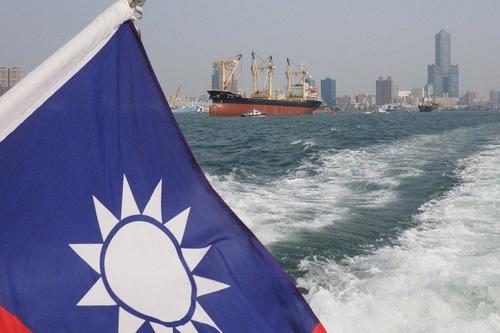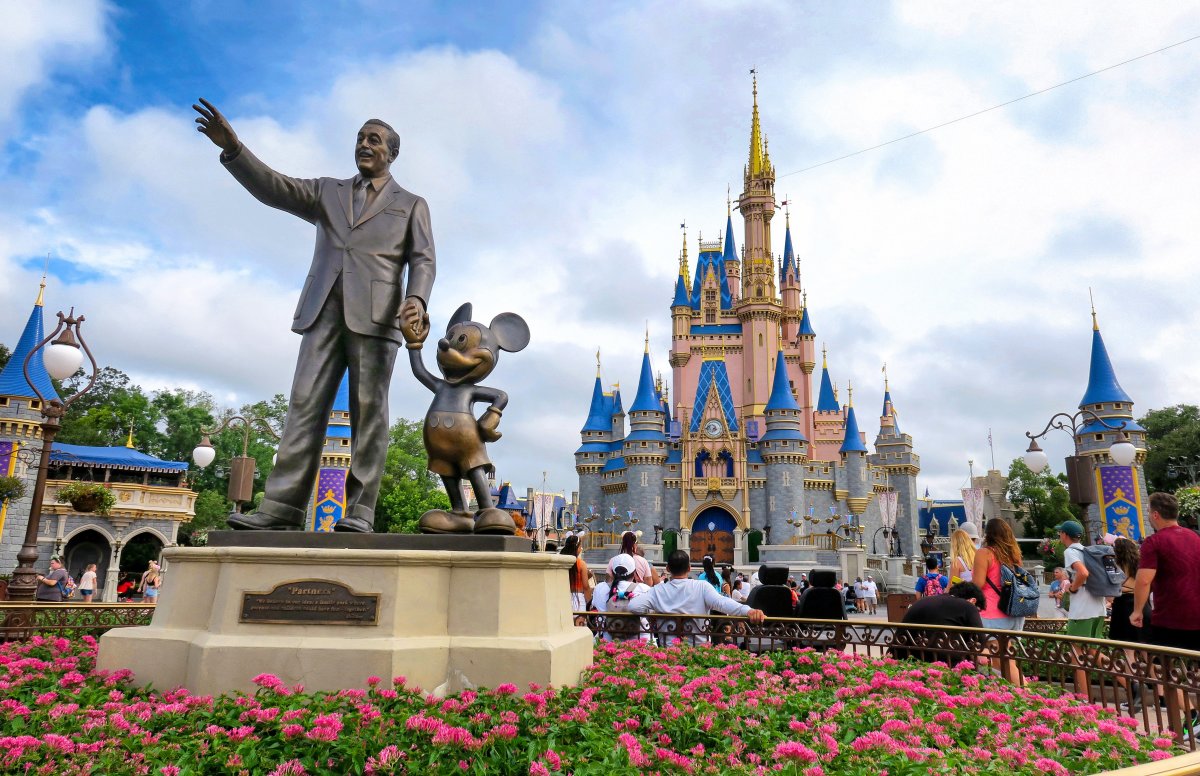International
Taiwan Seeks Entry Into Key Trade Pact Before China, Says Simultaneous Bid “Quite Risky”
Taiwan Seeks Entry Into Key Trade Pact Before China, Says Simultaneous Bid "Quite Risky"
China and Taiwan are increasingly entering a war of words as both are within the last week seeking to join the Comprehensive and Progressive Agreement…

China and Taiwan are increasingly entering a war of words as both are within the last week seeking to join the Comprehensive and Progressive Agreement for Trans-Pacific Partnership, or CPTPP. The Pacific trade pact involves Japan, Australia, Malaysia, New Zealand and others among 11 total countries, which began in 2018 - though previous to that it was known as the Trans-Pacific Partnership (TPP) and ironically was long deemed a crucial economic counterweight to China's regional influence.
On Wednesday, merely less than a week after Beijing announced its own bid for formal membership, Taiwan's Deputy Minister of Economic Affairs Chen Chern-chyi unveiled the application in a press conference while Cabinet spokesperson Lo Ping-cheng said, "Applying to join the CPTPP is an important economic and trade policy that the government has worked hard to promote for a long time."
Taiwan's chief trade negotiator John Deng admitted on the same day that "it will pose a major obstacle for Taiwan to join the trade bloc if Beijing joins it first." Beijing's 'One China' policy has attempted to aggressively enforce the idea that Taiwan can't join international trade pacts and institutions.
Deng followed up in Thursday statements by pointing out that China consistently attempts to obstruct Taiwan's participation in global trade and entities, underscoring that, "So if China joins first, Taiwan’s membership case should be quite risky. This is quite obvious."
"I stress that Taiwan is an sovereign, independent nation. It has its own name. But for trade deals the name we have used for years is the least controversial," Deng added. He explained further:
But Taiwan has a different "system" from China, Deng added, pointing to Taiwan’s democracy, rule of law, transparent laws and respect for personal property.
However he said there was no direct connection between Taiwan’s decision to apply and China’s, which has yet to comment on Taiwan’s application.
"How mainland China comments on this is a matter for them," Deng said.
He added that Taiwan, a major semiconductor producer, has applied to join under the name it uses in the World Trade Organization (WTO) — the Separate Customs Territory of Taiwan, Penghu, Kinmen and Matsu. Taiwan is a member of the WTO and Asia-Pacific Economic Cooperation (APEC) grouping.
Last week Chinese state-run media hailed the Beijing's own application application as affirming China's leading role in global trade and success in resisting Washington pressures. For example Communist Party mouthpiece Global Times had this to say in a prior op-ed just hours after the announcement:
The late-night announcement aims to cement China's leadership role in global trade, while piling pressure on the US that has thus far stayed away from rejoining the revised version of the Trans-Pacific Partnership (TPP), a regional trade pact initiated by the US under former President Barack Obama that was widely believed to be aimed at containing China's rise, experts said.
GT took further swipes, suggesting China represents multilateralism in the face of Washington bullying as follows:
China is hoping for the CPTPP to put global trade and economic cooperation back on track, underscoring the need for multilateralism, thereby reviving both the Chinese economy and the global economy in the post-COVID-19 era.
More importantly, watchers of international affairs stressed that China's latest step that is set to steady its partnership with CPTPP members, would inevitably subject the US to what could be overwhelming pressure.
So without doubt, officials in Beijing will see Taiwan's bid for CPTPP membership as but yet more Washington meddling with a US 'hidden hand' challenging One China.
On Thursday outspoken GT editor Hu Xijin weighed in with the following...
Taiwan applied to join the CPTPP. If Taiwan wants to use this process to reinforce its impact on the one-China policy, I can say with certainty that it cannot enter the CPTPP.
— Hu Xijin 胡锡进 (@HuXijin_GT) September 23, 2021
Currently Japan has the foremost visible leadership role in the CPTPP, which could further complicate things in terms of both China and Taiwan applying at the same time, given current rising Japan-China tensions are centered precisely on Tokyo's recent willingness to take a pro-Washington line on the matter.
Meanwhile, Britain began negotiations to enter the trans-Pacific trade pact in June, and its own case is front and center, said to be proceeding the fastest at the moment.
International
This country became first in the world to let in tourists passport-free
Singapore has been on a larger push to speed up the flow of tourists with digital immigration clearance.

In the fall of 2023, the city-state of Singapore announced that it was working on end-to-end biometrics that would allow travelers passing through its Changi Airport to check into flights, drop off bags and even leave and exit the country without a passport.
The latter is the most technologically advanced step of them all because not all countries issue passports with the same biometrics while immigration laws leave fewer room for mistakes about who enters the country.
Related: A country just went visa-free for visitors with any passport
That said, Singapore is one step closer to instituting passport-free travel by testing it at its land border with Malaysia. The two countries have two border checkpoints, Woodlands and Tuas, and as of March 20 those entering in Singapore by car are able to show a QR code that they generate through the government’s MyICA app instead of the passport.

Here is who is now able to enter Singapore passport-free
The latter will be available to citizens of Singapore, permanent residents and tourists who have already entered the country once with their current passport. The government app pulls data from one's passport and shows the border officer the conditions of one's entry clearance already recorded in the system.
More Travel:
- A new travel term is taking over the internet (and reaching airlines and hotels)
- The 10 best airline stocks to buy now
- Airlines see a new kind of traveler at the front of the plane
While not truly passport-free since tourists still need to link a valid passport to an online system, the move is the first step in Singapore's larger push to get rid of physical passports.
"The QR code initiative allows travellers to enjoy a faster and more convenient experience, with estimated time savings of around 20 seconds for cars with four travellers, to approximately one minute for cars with 10 travellers," Singapore's Immigration and Checkpoints Authority wrote in a press release announcing the new feature. "Overall waiting time can be reduced by more than 30% if most car travellers use QR code for clearance."
More countries are looking at passport-free travel but it will take years to implement
The land crossings between Singapore and Malaysia can get very busy — government numbers show that a new post-pandemic record of 495,000 people crossed Woodlands and Tuas on the weekend of March 8 (the day before Singapore's holiday weekend.)
Even once Singapore implements fully digital clearance at all of its crossings, the change will in no way affect immigration rules since it's only a way of transferring the status afforded by one's nationality into a digital system (those who need a visa to enter Singapore will still need to apply for one at a consulate before the trip.) More countries are in the process of moving toward similar systems but due to the varying availability of necessary technology and the types of passports issued by different countries, the prospect of agent-free crossings is still many years away.
In the U.S., Chicago's O'Hare International Airport was chosen to take part in a pilot program in which low-risk travelers with TSA PreCheck can check into their flight and pass security on domestic flights without showing ID. The UK has also been testing similar digital crossings for British and EU citizens but no similar push for international travelers is currently being planned in the U.S.
stocks pandemic link testing singapore uk euGovernment
Analysts issue unexpected crude oil price forecast after surge
Here’s what a key investment firm says about the commodity.

Oil is an asset defined by volatility.
U.S. crude prices stood above $60 a barrel in January 2020, just as the covid pandemic began. Three months later, prices briefly went negative, as the pandemic crushed demand.
By June 2022 the price rebounded all the way to $120, as fiscal and monetary stimulus boosted the economy. The price fell back to $80 in September 2022. Since then, it has bounced between about $65 and $90.
Over the past two months, the price has climbed 15% to $82 as of March 20.
Bullish factors for oil prices
The move stems partly from indications that economic growth this year will be stronger than analysts expected.
Related: The Fed rate decision won't surprise markets. What happens next might
Vanguard has just raised its estimate for 2024 U.S. GDP growth to 2% from 0.5%.
Meanwhile, China’s factory output and retail sales exceeded forecasts in January and February. That could boost oil demand in the country, the world's No. 1 oil importer.
Also, drone strokes from Ukraine have knocked out some of Russia’s oil refinery capacity. Ukraine has hit at least nine major refineries this year, erasing an estimated 11% of Russia’s production capacity, according to Bloomberg.
“Russia is a gas station with an army, and we intend on destroying that gas station,” Francisco Serra-Martins, chief executive of drone manufacturer Terminal Autonomy, told the news service. Gasoline, of course, is one of the products made at refineries.
Speaking of gas, the recent surge of oil prices has sent it higher as well. The average national price for regular gas totaled $3.52 per gallon Wednesday, up 7% from a month ago, according to the American Automobile Association. And we’re nearing the peak driving season.
Another bullish factor for oil: Iraq said Monday that it’s cutting oil exports by 130,000 barrels per day in coming months. Iraq produced much more oil in January and February than its OPEC (Organization of Petroleum Exporting Countries) target.
Citigroup’s oil-price forecast
Yet, not everyone is bullish on oil going forward. Citigroup analysts see prices falling through next year, Dow Jones’s Oil Price Information Service (OPIS) reports.
More Economic Analysis:
- Bond markets tell Fed rate story that stocks still ignore
- February inflation surprises with modest uptick, but core pressures ease
- Vanguard unveils bold interest rate forecast ahead of Fed meeting
The analysts note that supply is at risk in Israel, Iran, Iraq, Libya, and Venezuela. But Saudi Arabia, the UAE, Kuwait, and Russia could easily make up any shortfall.
Moreover, output should also rise this year and next in the U.S., Canada, Brazil, and Guyana, the analysts said. Meanwhile, global demand growth will decelerate, amid increased electric vehicle use and economic weakness.
Regarding refineries, the analysts see strong gains in capacity and capacity upgrades this year.
What if Donald Trump is elected president again? That “would likely be bearish for oil and gas," as Trump's policies could boost trade tension, crimping demand, they said.
The analysts made predictions for European oil prices, the world’s benchmark, which sat Wednesday at $86.
They forecast a 9% slide in the second quarter to $78, then a decline to $74 in the third quarter and $70 in the fourth quarter.
Next year should see a descent to $65 in the first quarter, $60 in the second and third, and finally $55 in the fourth, Citi said. That would leave the price 36% below current levels.
U.S. crude prices will trade $4 below European prices from the second quarter this year until the end of 2025, the analysts maintain.
Related: Veteran fund manager picks favorite stocks for 2024
stimulus economic growth pandemic dow jones stocks fed army trump gdp stimulus oil iran brazil canada european russia ukraine chinaInternational
Disney remote jobs: the most magical WFH careers on earth?
Disney employs hundreds of thousands of employees at its theme parks and elsewhere, but the entertainment giant also offers opportunities for remote w…

The Walt Disney Co. (DIS) is a major entertainment and media company that operates amusement parks, produces movies and television shows, airs news and sports programs, and sells Mickey Mouse and Star Wars merchandise at its retail stores across the U.S.
While most of the jobs at the multinational entertainment conglomerate require working with people — such as at its theme parks, film-production facilities, cruise ships, or corporate offices — there are also opportunities for remote work at Disney. And while remote typically means working from home, with Disney, it could also mean working in a non-corporate office and being able to move from one location to another and conduct business outside normal working hours.
Related: Target remote jobs: What type of work and how much does it pay?
What remote jobs are available at Disney?
Many companies, including Disney, have called employees to return to the office for work in the wake of the COVID-19 pandemic, and the bulk of the company’s positions are forward-facing, meaning they involve meeting with clients and customers on a regular basis.
Still, there are some jobs at the “most magical company on earth” that are listed as remote and don’t require frequent in-person interaction with people, including opportunities in data entry and sales.
On Disney’s career website, there are limited positions available where the work is completely remote. One listing, for example, is for a “graphics interface coordinator covering sporting events.” This role involves working on nights, weekends, and holidays — times when corporate offices tend to be closed — and it may make sense for the company to hire people who can work from home or to travel and work in a location separate from the game venue.
Some of the senior roles that are shown on the website involve managers who can oversee remote teams, whether that be in sales or data. Sometimes, a supervisor overseeing staff who work outside corporate offices may be responsible for hiring freelancers who work remotely.
On the employment website Indeed, there are limited positions listed. A job listing for a manager in enterprise underwriting for a federal credit union indicates weekend duty, working outside of an 8 a.m. to 5 p.m. schedule, and being able to work in different locations. The listed annual salary range of $84,960 to $132,000, though, is well above the national annual average of around $50,000.
Internationally, Disney offers remote work in India, largely in the field of software development for its India-based streaming platform, Disney+ Hotstar.
The company also offers some hybrid schemes, which involve a mixture of in-office and remote work. For a mid-level animator position based in San Francisco, the role would involve being in the office and working from home occasionally.
How much do remote jobs at Disney pay?
Pay for remote jobs at Disney varies significantly based on location. A salary for a freelance artist in New York City, for example, may be higher than for the same job in Orlando, Florida.
Disney lists actual salary ranges in some of its job postings. For example, the yearly pay for a California-based compensation manager who works with clients is $129,000 to $165,000.
In an online search for “remote jobs at Disney,” results range from $30 to $39 an hour, for data entry, or $28.50 to $38 an hour for social media customer support.
How can I apply for remote jobs at Disney?
You can look for remote jobs on Disney's career site, and type “remote” in the search field. Listings may also appear on career-data websites, including Indeed and Glassdoor.
How many employees does Disney have?
In 2023, Disney employed about 225,000 people globally, of which around 77% were full-time, 16% part-time, and 7% seasonal. The majority of the workers, around 167,000, were in the U.S.
Disney says that a significant number of its employees, including many of those who work at its theme parks, along with most writers, directors, actors, and production personnel, belong to unions. It’s not immediately known how many remote workers at the company, if any, are union members.
india pandemic covid-19-

 Spread & Containment1 week ago
Spread & Containment1 week agoIFM’s Hat Trick and Reflections On Option-To-Buy M&A
-

 Uncategorized4 weeks ago
Uncategorized4 weeks agoAll Of The Elements Are In Place For An Economic Crisis Of Staggering Proportions
-

 International2 weeks ago
International2 weeks agoEyePoint poaches medical chief from Apellis; Sandoz CFO, longtime BioNTech exec to retire
-

 Uncategorized1 month ago
Uncategorized1 month agoCalifornia Counties Could Be Forced To Pay $300 Million To Cover COVID-Era Program
-

 Uncategorized4 weeks ago
Uncategorized4 weeks agoApparel Retailer Express Moving Toward Bankruptcy
-

 Uncategorized1 month ago
Uncategorized1 month agoIndustrial Production Decreased 0.1% in January
-

 International2 weeks ago
International2 weeks agoWalmart launches clever answer to Target’s new membership program
-

 Uncategorized1 month ago
Uncategorized1 month agoRFK Jr: The Wuhan Cover-Up & The Rise Of The Biowarfare-Industrial Complex

















